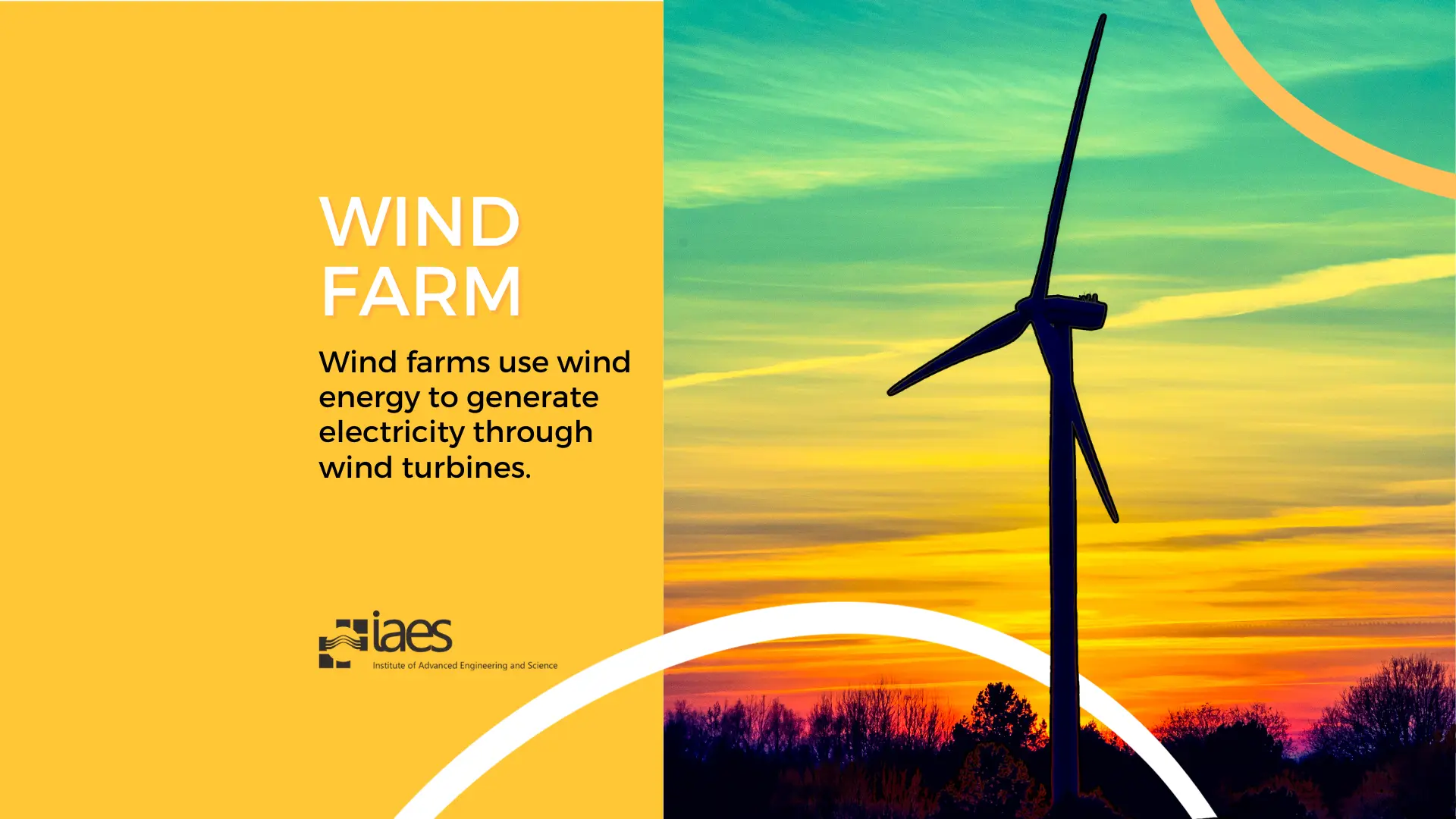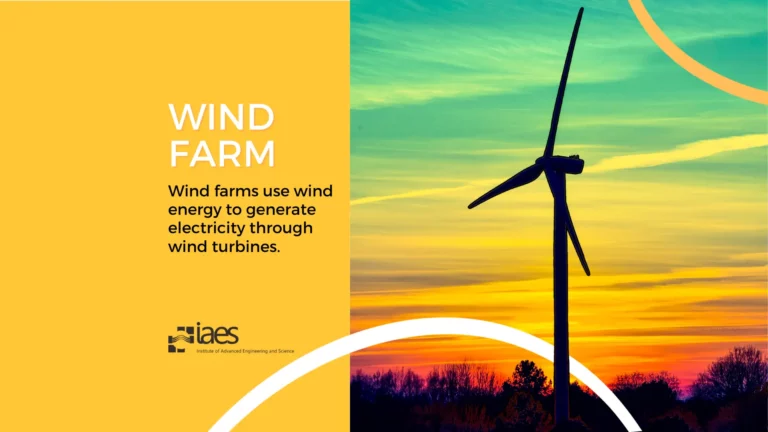




Greetings, fellow Nawala! May you always be in good health.
This is the IAES Nawala of the Institute of Advanced Engineering and Science. Today we will be sharing news about wind farming. Wind farms use wind energy to generate electricity through wind turbines. Location, wind resources, and environmental impacts must be considered in constructing wind farms. Integration of wind power into the grid can pose challenges from its variability, erratic nature, and the need for synchronization between the grid and conventional generation. Tarik and Adil (2022) proposed the use of a UPFC-based fuzzy logic controller (FLC) to address the disturbances caused by the integration of wind power generation into the grid. This controller can improve grid stability and control power flow effectively.
Wind farm connected to a grid using fuzzy logic controller based the unified power flow controller
Rabyi Tarik, Brouri Adil
The doubly-fed induction generator (DFIG) based wind farm is widely used for extracting energy from the wind. When the wind farm is connected to the grid, generally it causes some perturbations. It can disturb the function of the grid and the installations connected to the grid. This impact concerns the load flow, voltage drops, and frequency fluctuations. To overcome those issues, the unified power flow controller (UPFC) is recommended. In this paper, we propose to study the impact of the integration of a wind farm on the power system. Presently, we propose an original contribution by using UPFC based on fuzzy logic controllers (FLC). Finally, simulation and experimental results using MATLAB/Simulink are proposed to show the effectiveness of this solution.
The incorporation of wind farms into the power grid can have positive impacts such as voltage support and increased grid resilience, but it can also cause voltage fluctuations and voltage fluctuation problems. In addition, the integration of wind farms can affect the voltage stability margin (VSM). Attar et al. (2022) proposed a new method to determine the maximum size of a wind farm by considering the VSM and wind patterns at the wind farm site.
Impacts of integration of wind farms on voltage stability margin
Hani Attar, Mehrdad Ahmadi Kamarposhti, Ahmed Amin Ahmed Solyman
The current methods use conservative voltage based on the maximum wind speed with simultaneous occurrence in peak loading conditions to determine the maximum size of the wind farm. Wind patterns never let the wind farm on the wind farm site produce its maximum capacity during hours of heavy loading conditions. A new method is presented in this research to determine the maximum size of wind farms including voltage stability margin (VSM) and wind patterns at the wind farm site in the size of a wind farm. This plan is a method to increase the maximum size of a wind farm with a limited wind generation option under certain conditions based on VSM. The proposed method is applied to the wind farm in the IEEE 14-bus network power system. The results of the new method show that the maximum size of wind farms increases when the system operates with intermittent wind control to maintain the voltage stability.
Finding an optimal method for power grid interconnection and cable sizing in wind farms is essential. Al-Khafaji et al. (2023) discussed the use of search algorithms and soil excavation methods to achieve the most optimal optimization of power grid interconnections and cable sizes for wind farms. In addition, in their research they also consider the costs incurred to be minimized so that it becomes more efficient.
Fareed Kadhim Hussein Al-Khafaji, Ali Abdul Hussein Kareem Al Humaidani, Adiy Aljaberi, Iman Mohammed Abd Zaid
Modern wind farms are considered one of the most important sources of energy today. The biggest cost of the farm is the cost of electrical connection to the farmers (constituting the largest part of the aesthetic cost of the farm) and finding the best method for electrical connection (the optimal method) for wind turbines (WTS), as well as the optimal size and measurement of electrical cables. Here, the (harmonious) search algorithm solves the optimization problem and the method of digging the soil in order to lay the cables in it. Two cases will be discussed in order to calculate the optimal size of the cables, namely partial calculation and optimal calculation for connection schemes in the best method for wind farms (OWFS). Also, the total cost, shipping methods, methods of digging extensions into the soil and the different classifications for turbines (wind turbines) will be addressed in order to obtain the best investment for them, so that we reach the optimal delivery and the lowest possible cost in a coordinated and thoughtful manner.
The above articles are a small part of the research on wind farms. To get more information, readers can visit the page and read the articles for FREE through the following links: https://ijpeds.iaescore.com/ dan https://ijece.iaescore.com/.
